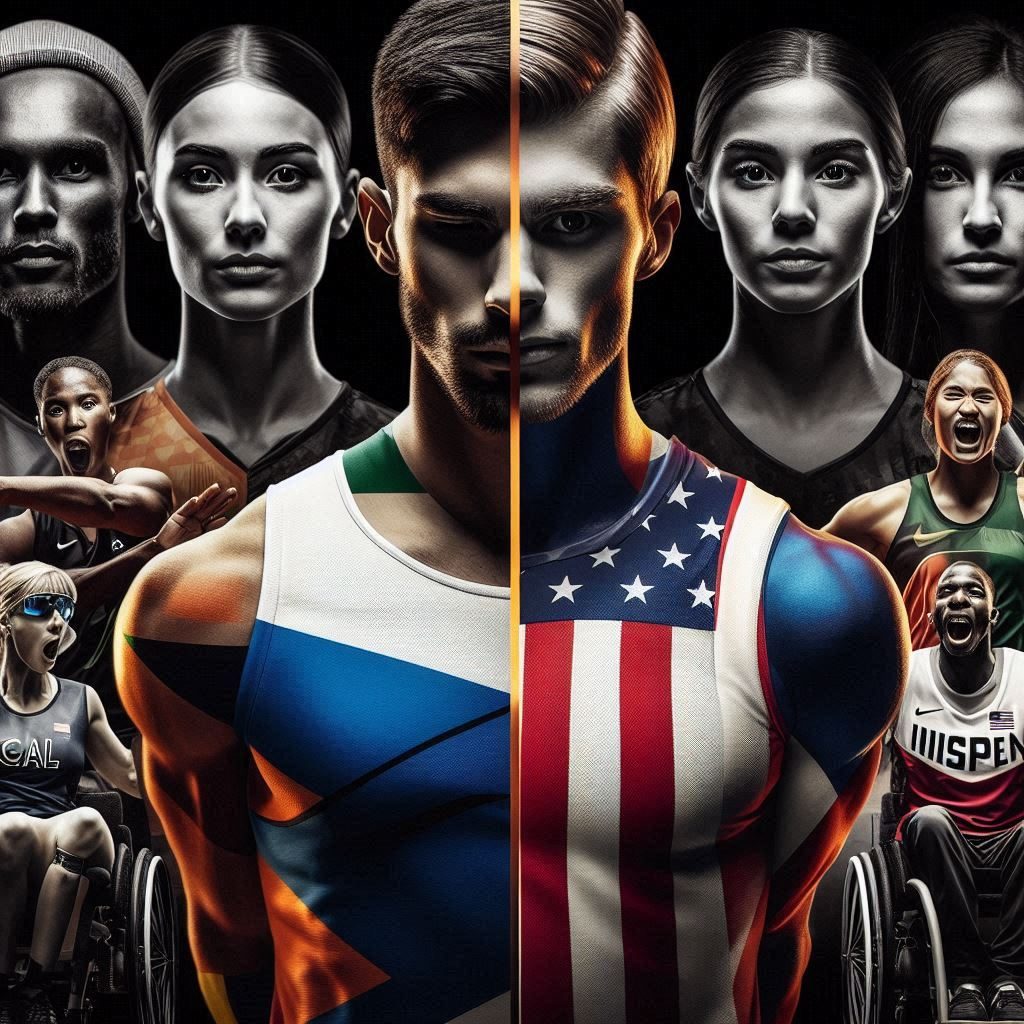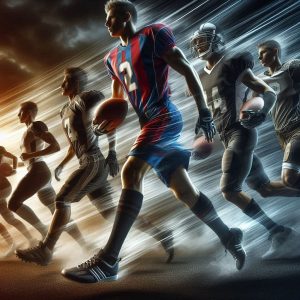
Sports Uniforms
—————————–
What Do Sports Uniforms Do?
The impact of sports uniforms is more than just a way to identify teams on the field. They can also have a significant impact on an athlete’s performance. From the psychological effects of color to the physical benefits of fabric technology, the design of a sports uniform can influence how well an athlete performs.

Team Identity and Unity
Wearing a uniform can foster a sense of unity and identity among team members. This unity can boost morale and motivation, which can subsequently enhance performance.
Color Psychology
The color of a sports uniform can also have psychological effects. For instance, teams wearing black are often perceived as more aggressive or dominant, which can intimidate opponents. On the other hand, teams in lighter colors may be seen as more approachable and less threatening.
Physical Impact
Comfort and Mobility
The material and fit of a sports uniform can directly affect an athlete’s comfort and mobility. High-quality fabrics that wick away sweat can keep athletes cool and comfortable, allowing them to focus on the game. Similarly, a well-fitted uniform can enhance mobility and prevent injuries.
Aerodynamics
In sports where speed is crucial, such as cycling or skiing, the design of a uniform can affect aerodynamics. Sleek, form-fitting uniforms can reduce air resistance and allow athletes to move more quickly and efficiently.
Technological Advances
Advancements in fabric technology have led to the creation of sports uniforms that can enhance performance. For example, compression clothing can improve blood flow and speed up recovery time. Other innovations include moisture-wicking fabrics and temperature-regulating materials.
Training Uniforms vs Game Uniforms
While both training and game uniforms are designed with the athlete’s needs in mind, they serve different purposes and thus have different characteristics.
Training Uniforms
Training uniforms are primarily designed for comfort and durability. They are meant to withstand the rigors of daily practice sessions and often made from materials that are durable, breathable, and easy to clean.
Comfort
Training uniforms are typically looser and more relaxed in fit compared to game uniforms. This allows athletes to move freely and comfortably during long training sessions.
Durability
Given the frequent use and the intense nature of training sessions, the impact of sports uniforms is designed to be robust and long-lasting.
Functionality
Training gear often includes additional features like pockets for convenience during training.

Game Uniforms
Game uniforms, on the other hand, are designed to enhance performance, adhere to the rules of the sport, and represent the team’s identity.
Performance
Game uniforms are often designed with specific performance-enhancing features. For instance, they might be made from aerodynamic materials for sports where speed is crucial.
Regulations
Each sport has its own set of rules and regulations regarding what athletes can wear during official games. Game uniforms are designed to comply with these rules.
Team Identity
Game uniforms bear the team’s colors, logo, and often the athlete’s number, representing the team’s identity and fostering a sense of unity among team members.
Game Day Or Training Uniforms
Both types of uniforms are essential in sports, they serve different purposes. Training uniforms prioritize comfort and durability for effective practice sessions, while game uniforms focus on performance, compliance with rules, and team representation.

Gender-Specific Uniform Designs
—————————————-
Male Or Female Uniforms
Sports uniforms are not one-size-fits-all, and this is particularly true when it comes to differences in male and female uniforms. The design and structure of sports uniforms often vary between genders to accommodate physiological differences and societal norms.
Physiological Considerations
Uniforms are designed to fit the body shape of the athlete, and there are distinct differences between male and female body shapes. Women’s uniforms often have a more tapered design at the waist and may provide more room at the hips and chest. Men’s uniforms, on the other hand, may have broader shoulders and a straighter cut.
In sports like swimming and athletics, where minimal clothing is worn, women’s uniforms often include a top and bottom or a one-piece suit, while men’s uniforms might only include shorts.
Societal Norms and Comfort
Societal norms and expectations also play a role in the design of sports uniforms. For instance, in sports like basketball and soccer, men typically wear shorts, while women have the option of wearing shorts or skirts.
Comfort and personal preference are also important factors. Some female athletes may prefer to wear more form-fitting uniforms for comfort or performance reasons, while others may prefer looser uniforms for modesty or ease of movement.
Equality and Controversies
It’s important to note that the difference in uniform designs has sometimes led to controversies, with critics arguing that women’s uniforms can be more revealing than men’s, leading to objectification. In response, some sports organizations are working towards creating more equitable uniform rules that prioritize athlete comfort and choice.
Adaptive Disability Sports Uniforms
The reason for adaptive sports uniforms are designed to meet the unique needs of athletes with disabilities or just basic comfort. These uniforms consider various factors such as comfort, functionality, and ease of use, making sports more accessible and enjoyable for everyone.
Ease of Use
One of the primary considerations in adaptive sports uniforms is ease of use. Features such as Velcro closures, magnetic buttons, and adjustable straps can make it easier for athletes with limited mobility or dexterity to dress independently.
Functional Design
Adaptive sports uniforms often have a functional design that accommodates the specific needs of the athlete. For example, wheelchair basketball players might wear padded shorts to protect against friction and pressure sores. Similarly, uniforms for visually impaired athletes might include tactile elements to help them identify their gear.
Comfort and Mobility
Comfort and mobility are crucial in any sports uniform, but they’re especially important for athletes with disabilities. Adaptive sports uniforms are designed to fit well and move with the athlete, reducing discomfort and enhancing performance. For instance, seated athletes might wear uniforms with a higher back rise to prevent them from riding down while playing.
Technological Advances
With advancements in technology, adaptive sports uniforms have become more sophisticated. Some uniforms now feature temperature-regulating fabrics and pressure-distributing padding. There are also prosthetic-friendly designs for amputee athletes, ensuring a secure and comfortable fit.
Kids vs Adults
——————
Sports Uniforms
When it comes to sports uniforms, the needs of kids and adults can be quite different. Here’s a look at some of the key considerations for each group.
Kids’ Sports Uniforms
Growth and Size
Kids grow quickly, so their sports uniforms need to accommodate this. Adjustable features such as elastic waistbands and extendable hems can allow the uniform to grow with the child, providing a better fit and longer usage.
Durability
Kids can be tough on their clothing. Therefore, kids’ sports uniforms need to be durable to withstand rough play and frequent washing. Reinforced stitching and robust materials can help the uniform last longer.
Safety
Safety is paramount in kids’ sports uniforms. This could mean using softer, lighter materials to prevent injury, or incorporating reflective elements for visibility in low light conditions.
Adults’ Sports Uniforms
————————–
Performance
Adult athletes often require he impact of sports uniforms that enhance performance. This could include moisture-wicking fabrics to keep them dry, or compression garments to support muscles and improve circulation.
Comfort and Fit
As adults’ bodies are fully grown, the fit of the uniform becomes more important. A well-fitted uniform can enhance comfort, prevent chafing, and allow for better mobility.
Professionalism
For adult athletes, especially at the professional level, the uniform is also a symbol of their team and their personal brand. The impact of sports uniforms changing the design, color scheme, and even the sponsor logos on the uniform can be significant. This gives the team symbolism.
Understanding Sports Uniforms
A sports uniform, also known as a kit or jersey, is a set of clothing worn by members of a team while participating in a sporting game. The uniform is often designed in a manner that clearly identifies the athletes, differentiates the teams, and unifies the players within each team.

Components of a Sports Uniform
A sports uniform typically includes a shirt or jersey, shorts or pants, and footwear appropriate for the sport. Depending on the sport, it may also include protective gear such as helmets, pads, or gloves. Each piece of the uniform serves a specific purpose, whether it’s to protect the athlete, enhance performance, or adhere to the rules of the game.
Symbolism of Sports Uniforms
Sports uniforms carry a lot of symbolism. The colors, logos, and numbers on a uniform represent the team’s identity and heritage. They foster a sense of belonging among team members and create a visual connection with the team’s fans.
Regulations and Standards
Sports uniforms are often subject to regulations set by sports governing bodies. These regulations may dictate the color scheme, logo placement, number style, and even the fabric of the uniform. The aim is to ensure fairness, prevent confusion during the game, and maintain the sport’s traditions and standards.
Technology and the Evolution of Sports Uniforms
The impact of sports uniforms changes ith tech overtime to be safer, faster, and better looking. Advancements of technology has significantly influenced the design and functionality of sports uniforms. From the materials used to the manufacturing processes, technology has enabled the creation of uniforms that not only enhance performance but also ensure athlete comfort and safety.
Material Technology
The development of new materials has led to uniforms that are lighter, more durable, and better suited to the demands of various sports. For example, moisture-wicking fabrics can draw sweat away from the body, helping athletes stay cool and dry. On the other hand, thermal fabrics can provide warmth in cold conditions.
Wearable Technology
Wearable technology has also found its way into sports uniforms. Integrated sensors can monitor an athlete’s heart rate, body temperature, and other vital signs, providing valuable data that can be used to improve performance and prevent injuries.
Manufacturing Techniques
Advancements in manufacturing techniques have allowed for more precise and customized uniform designs. Digital printing technology, for example, enables the creation of intricate patterns and logos. Meanwhile, seamless knitting technology can produce uniforms with fewer seams, reducing the risk of chafing and improving comfort.
Sustainability
With growing awareness of environmental issues, many sports brands are now using sustainable methods to produce their uniforms. This includes using recycled materials or reducing water usage during production. The impact of sports uniforms is not just sports but sustainability.
Conclusion
While the impact of sports uniforms on performance can vary depending on the sport and the athlete, it’s clear that they play a significant role. From psychological effects to physical benefits, the design of a sports uniform is a critical factor in sports performance.
Adaptive sports uniforms play a vital role in making sports more inclusive and accessible. By considering the unique needs and challenges of athletes with disabilities, these uniforms can enhance performance, comfort, and confidence, allowing all athletes to compete at their best.
Technology continues to drive changes in sports uniforms, pushing the boundaries of what’s possible. As advancements continue, we can expect to see the impact of sports uniforms that are increasingly comfortable, performance-enhancing, and eco-friendly.
The basic function of a sports uniform remains the same across all ages, the specific needs and considerations can vary greatly between kids and adults. By understanding these differences, we can ensure that all athletes have the right uniform to help them perform at their best.
Sports uniform is much more than just clothing. It’s a symbol of team spirit, a tool for identification, and a means to enhance performance. It embodies the ethos of the team and carries the pride of the athletes who wear it.
Join the Discussion
We hope you found this exploration of sports uniforms insightful. Now, we’d love to hear from you!
What are your thoughts on the impact of sports uniforms on performance?
Have you noticed a difference in your performance or comfort when wearing different types of sports uniforms?
What is the impact of sports uniforms to you?
What do you think about the advancements in technology and how they’re changing sports uniforms?
Do you have any ideas for how sports uniforms could be improved in the future?
Let us know what you think about sports uniforms?
#SportsUniforms #Performance #TeamUnity #ColorPsychology #Comfort #Mobility #Aerodynamics #FabricTechnology #GenderSpecificUniforms #AdaptiveSportsUniforms #KidsSportsUniforms #AdultsSportsUniforms #SportsWear #AthleticWear #TeamJerseys #SportsKit #SportsFashion #AthleticPerformance #SportsPsychology #UniformDesign #SportsTechnology #WearableTech #SustainableSportsWear #SportsDiscussion #SportsBlog #AthleteLife #GameDay #SportsGear #TeamPride #GameReady







Hi, Neat post. There’s an issue together with your web site in internet explorer, may test this·IE still is the marketplace chief and a good component of people will pass over your fantastic writing due to this problem.
I like this web site its a master peace ! Glad I noticed this on google .
You could definitely see your skills in the work you write. The world hopes for even more passionate writers like you who are not afraid to say how they believe. Always follow your heart.
Pretty section of content. I just stumbled upon your website and in accession capital to say that I get actually enjoyed account your weblog posts. Any way I will be subscribing in your feeds and even I achievement you get entry to consistently quickly.
Some really superb information, Gladiola I detected this.